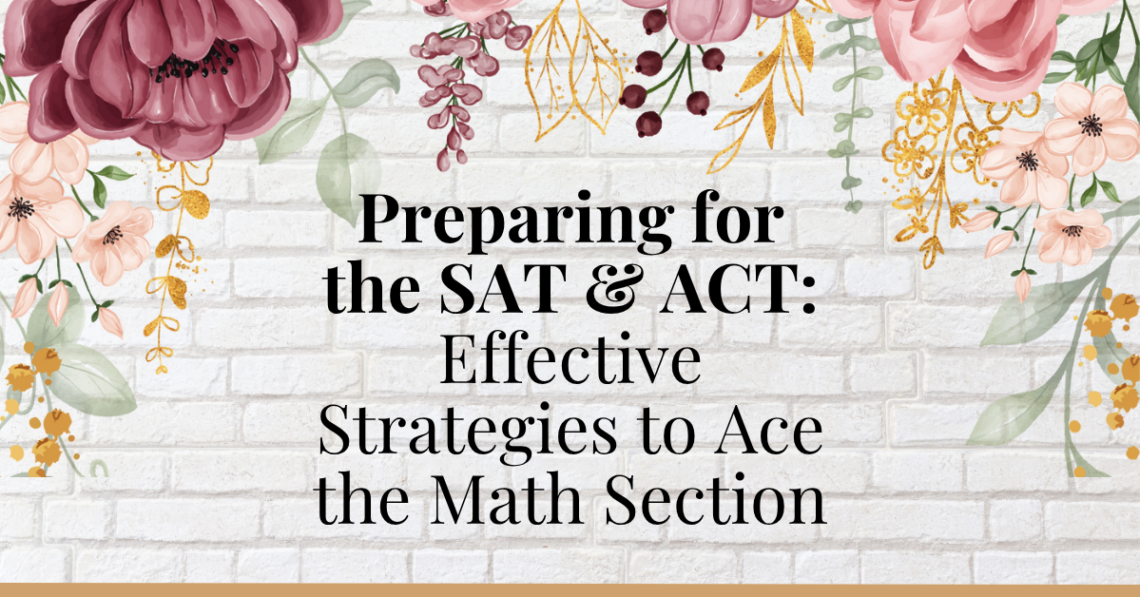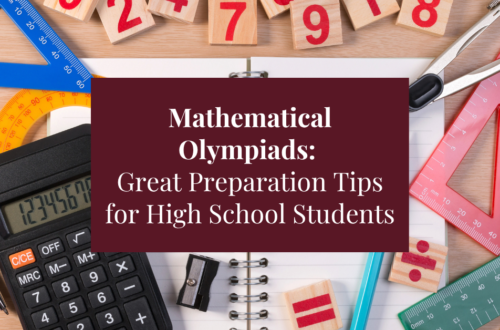As teachers, we know how important it is to prepare students for success on standardized tests like the SAT and ACT. These exams are key milestones in a student’s academic journey, and the math sections can often feel like the most intimidating part. With the right guidance, however, students can approach these sections with confidence and strategy. In this blog post, we’ll explore effective strategies for both students and teachers to ace the math sections of the SAT and ACT.
1. Understand the Test Format and Content
Before diving into preparation, it’s crucial to understand what each test requires. Here’s a breakdown:
SAT Math Section:
- Total questions: 58 questions (split into two sections)
- Topics covered:
- Heart of Algebra (Linear equations, inequalities, systems of equations)
- Problem Solving and Data Analysis (Ratios, percentages, data interpretation)
- Passport to Advanced Math (Quadratic equations, functions, exponential equations)
- Geometry and Trigonometry (Angles, circles, volume, trigonometric functions)
ACT Math Section:
- Total questions: 60 questions
- Topics covered:
- Pre-Algebra (Basic operations, fractions, ratios)
- Elementary Algebra (Solving equations, inequalities)
- Coordinate Geometry (Slope, distance, midpoint, graphing)
- Plane Geometry (Triangles, circles, area)
- Trigonometry (Sine, cosine, tangent)
Both tests cover similar content areas, but understanding the nuances of each will help students focus their efforts.
2. Insights from the ACT Makers
According to the creators of the ACT, the Math section is designed to assess students’ mathematical skills typically acquired up to the 12th grade. The questions focus on skills necessary for success in entry-level college math courses. The ACT emphasizes problem-solving, mathematical reasoning, and the ability to apply knowledge to real-world situations.
For teachers, understanding this design is key to focusing on problem-solving strategies and real-world applications in the classroom.
3. Identify Strengths and Weaknesses
For both teachers and students, taking a diagnostic test is one of the most effective ways to identify strengths and weaknesses in math. A diagnostic test will allow you to pinpoint areas where students need more practice and help create a targeted study plan. Once the test is complete, break down the results by topic to see which areas require further attention.
As teachers, helping students analyze their results and prioritize weak areas for review will make the study process more efficient.
4. Focus on Key Math Concepts
Students should focus on mastering several key concepts that are frequently tested on both the SAT and ACT. Here’s a closer look at these areas:
- Algebra: Both tests focus heavily on algebraic concepts, such as solving equations, working with expressions, and understanding inequalities. Teachers should ensure students are comfortable solving these problems quickly and efficiently.
- Geometry: Geometry questions appear on both exams, often involving concepts such as area, volume, and properties of triangles and circles. Trigonometry is also a component on the ACT. Teachers can support students by providing practice with drawing figures and visualizing problems.
- Functions and Graphs: Both exams test students’ ability to interpret graphs and understand functions. This includes linear, quadratic, and exponential functions. Teachers can incorporate graphing practice in class, using both paper and technology-based graphing tools.
- Data Interpretation: SAT students often encounter data interpretation questions that involve tables and graphs. Teachers can build students’ skills in analyzing and interpreting different forms of data.
5. Use High-Quality Prep Materials
Choosing the right resources is vital for effective preparation. Here’s how students and teachers can make the most of available materials:
- Official Test Prep Books: Both SAT and ACT official prep books provide previously released test questions. These resources help students become familiar with the test format and question styles.
- Online Platforms: Khan Academy offers free SAT prep resources, while ACT.org provides free materials for ACT prep. Teachers can incorporate these into classroom activities, or recommend them for extra practice.
- Practice Tests: Timed practice tests are essential for improving speed and accuracy. Teachers should administer full-length practice tests in class or encourage students to complete them at home. Reviewing these tests afterward will help reinforce the material.
6. Master Time Management
Time management is crucial for success on both tests. Both the SAT and ACT math sections feature a strict time limit, meaning students must solve problems quickly and efficiently.
- Pacing: The SAT math section gives students 80 minutes for 58 questions, while the ACT gives 60 minutes for 60 questions. Teachers should work with students to develop strategies for pacing themselves through the test.
- Skip and Return: Teach students to skip difficult questions and return to them later if time allows. Focusing on easier questions first can ensure they get the most points possible.
- Process of Elimination: On multiple-choice questions, students should eliminate obviously incorrect answers to improve their chances of guessing correctly when necessary.
7. Create a Study Schedule and Stick to It
Consistency is key. For students preparing for both tests, a study schedule can help make the process feel more manageable. Teachers can support students by offering study schedules, progress trackers, and study group opportunities.
- Set Weekly Goals: For example, focus on algebra one week and geometry the next. Teachers can assign homework or classwork that targets specific concepts.
- Review: Revisiting previously studied material helps reinforce learning. Teachers can include regular review sessions in their lesson plans.
8. Stay Calm and Confident on Test Day
Test anxiety is a real concern for many students, but staying calm is crucial for doing well. Teachers can help by encouraging students to adopt healthy test-day habits:
- Get Rest: Ensure students understand the importance of getting a good night’s sleep before the test.
- Eat a Healthy Meal: A nutritious breakfast will help keep students focused during the test.
- Practice Positive Self-Talk: Teach students to remain confident and remind them of all the preparation they’ve done.
9. Review and Learn from Mistakes
After taking practice tests, it’s vital to go over incorrect answers to understand what went wrong. Teachers should guide students in identifying their mistakes and figuring out how to avoid them on test day.
Conclusion
With these strategies in place, both students and teachers can feel prepared and confident when approaching the math sections of the SAT and ACT. By understanding the test format, focusing on core math concepts, and mastering time management, students can improve their scores and achieve their academic goals. Teachers play a vital role in guiding their students through this process, providing valuable resources and support every step of the way.
Teachers and students, I’d love to hear from you! What strategies have worked best for you when preparing for the SAT or ACT math sections? Share your thoughts in the comments below, or reach out to continue the conversation!





